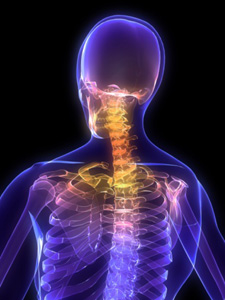
What’s up with our kids’ spinal health?
Patients, and parents of patients, will often ask us what could have happened to themselves or their loved ones to account for the spinal issues they have.
Unfortunately, our answer is often “we can’t be certain.”
Sure, we can make an educated assumption, based on what we know of a patient’s history or lifestyle habits, but more often than not, there is no one decisive cause. Short of an obvious life-changing event, such as a serious car accident or sports-related injury, it is the accumulation of many things over a period of time.
It’s not much different than asking why have I gained so much weight, or why did those cavities show up on my last dental cleaning?
Such questions seldom have clear answers. All we can do as professionals is assess the current situation with the information available to us and develop a suitable course of care.
Not just their parents’ problem anymore
We bring this up because of the number of new teen-aged patients in the past couple of weeks who have each displayed a substantial forward head carriage. This is the kind of cumulative condition we once only expected to see in people in their 30s and beyond.
Why that age group? Because they had spent years at a job that impacted their posture, such as in an office hunched over a desk.
The diagnosis of these kids, clearly demonstrated by their x-rays, have surprised and concerned their parents. As well it should.
To recap, the cervical part of the spine – your neck – has a natural C-curve. Each vertebrae, and the discs between, are designed to fit together in that arrangement. This alignment is key for the spinal cord – the essential conduit for two-way communication between the brain and the rest of the body – to not be under tension in any way.
The damage accumulates
Left unaddressed, this condition leads to arthritic degeneration of the vertebrae, which is irreversible. This often leads to chronic pain/headaches and lost mobility, as well as impaired function in other parts of the body due to the physical stress that is put on the spinal cord.
With one of these teen-aged patients, a 15-year-old girl, the first signs of arthritic degeneration are already evident in her x-rays.
The good news is that, the younger the patient, the more effective the right intervention can be. Kids bounce back fast and usually show progress far more quickly than their parents and grandparents.
But the question remains – why are we seeing anterior carriage more often than before among, not just teens, but pre-teens as well?
We’ve blogged before about the risks of so-called text neck. All that time hunched over smart phones, tablets, and game controllers takes as much, if not more, of a toll on a young person’s spinal health as desk work does on their parents’.
Given that these young patients are typical teenagers, we can only assume these habits are the primary contributing factor.
Get checked and be sure
Which only serves to reinforce the fact that you can never be sure without a proper examination. Anterior carriage is often a silent condition – by the time obvious symptoms of a problem show up – such as chronic pain or lost function – the condition and the arthritic degeneration that often accompanies it may be already far advanced.
Just because someone is young, don’t fall into the trap of assuming that bad habits haven’t caught up with them yet. Look at how poor nutrition habits have contributed to the epidemic that is childhood obesity. Your kids’ spinal health is no different – life can, and does, take a toll at a young age.
